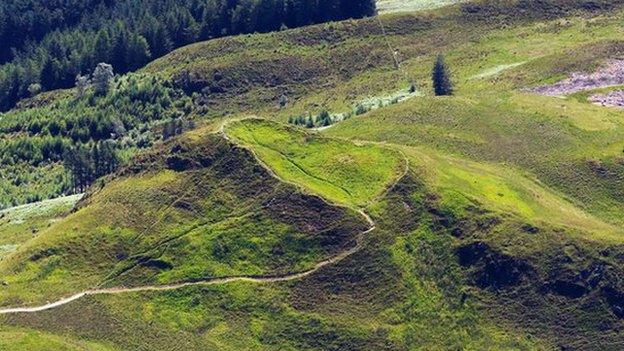Ash from destructive hill fort fire 'preserved in peat'
- Published
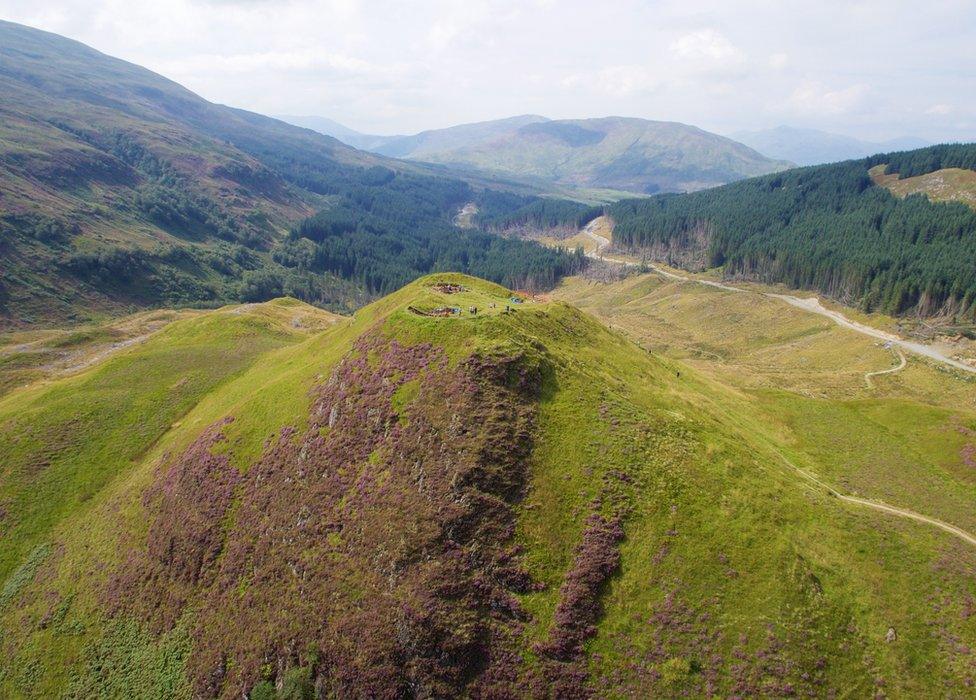
Dun Deardail was built 2,500 years ago
Archaeologists believe they have found, preserved in peat, charcoal from a fire that destroyed an ancient hillfort.
Dun Deardail was built about 2,500 years ago on a prominent knoll on Sgorr Chalum, a hill overlooking the River Nevis in Glen Nevis.
Charcoal found in surrounding peatbog has been analysed.
Four "significant fire events" were identified as layers of charcoal or soot. One, from around 310BC, is thought to be the fort's burning.
Archaeologists said the fire that destroyed Dun Deardail would have "created towering plumes of smoke rising up from the fort, expelling ash and charcoal into the air".
Layers of peat nearby were analysed and subject to a series of radiocarbon dates.
The earliest of the fire events is believed to be from fires set to burn away scrub to help clear the site for the construction of the fort around 500BC.
The middle two events involved decreasing amounts of charcoal, while the largest layer, dating to 310BC, is thought to represent the burning of the hillfort.
Chieftain's daughter
The name Dun Deardail, Derdriu's Fort, links it to an ancient Iron Age Irish myth called The Sorrow of Derdriu.
The legend tells of a chieftain's daughter who was said to be so beautiful that kings, lords and warriors fought and died to try to win her hand in marriage.
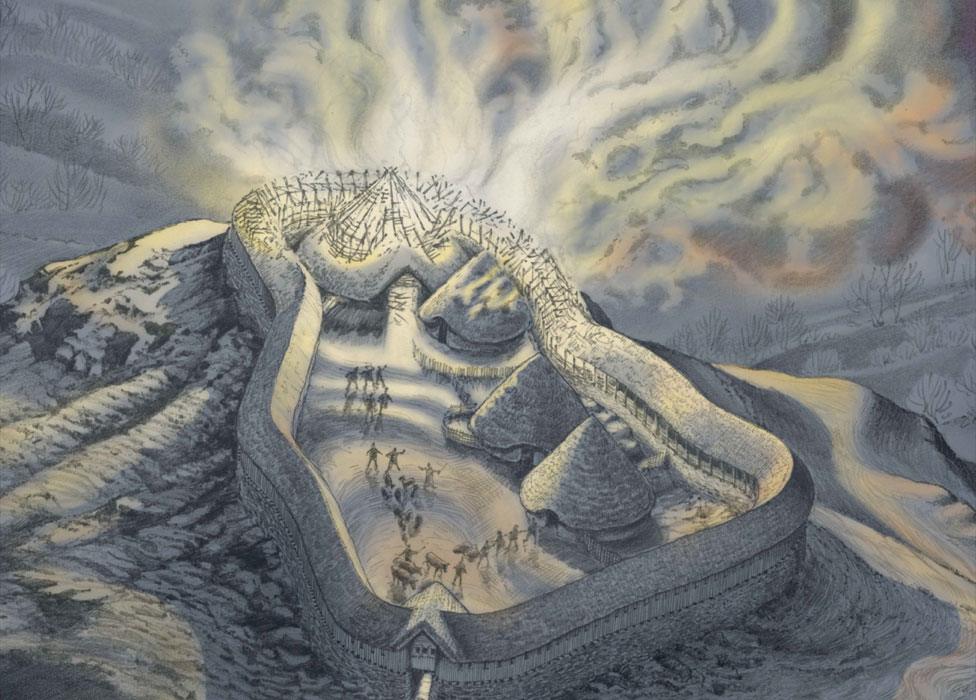
A reconstruction of what the hill fort looked like at the time fire broke out at the site causing the vitrification of its rock defences
Dun Deardail is what is known as a vitrified fort.
The process of vitrification occurs when a timber-framed drystone defensive rampart is destroyed by fire and the heat generated is so intense that the core of the stone rampart melts.
Examples of vitrified forts can be found across Scotland, including in Aberdeenshire.
The Dun Deardail research work was the first time charcoal analysis, along with pollen analysis and radiocarbon dating, had been used to date a vitrification event.
The details of the peat analysis, done as part of an excavation of the site, and history of the hillfort, close to Fort William, are contained in a new publication.
The Archaeology of Dun Deardail, external is available online and has been published by Forestry Commission Scotland as part of the Nevis Landscape Partnership, external.

The Sorrow of Derdriu
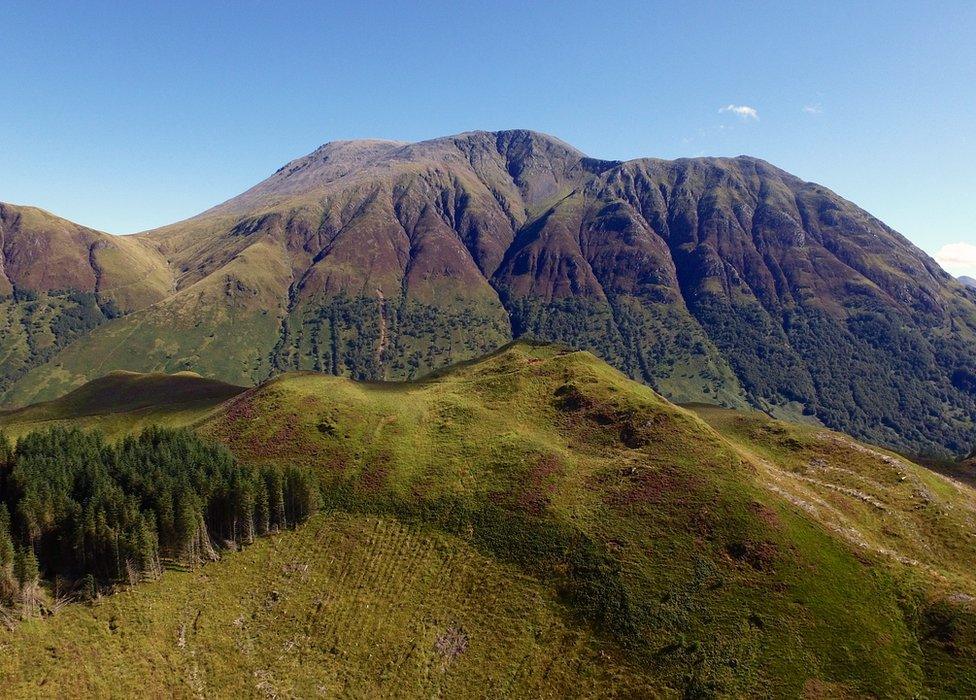
Dun Deardail takes its name from an chieftain's daughter of Irish legends
Forestry Commission Scotland archaeologist Matt Ritchie gives an account of the Irish legend:
"The story begins in Ulster, with a prophecy by the druid Cathub.
'Call her Derdriu. She will be very beautiful but will bring much sorrow. She will be the cause of the treachery of kings and the death of many heroes.'
King Conchubur ignores the calls of his men to kill the child at birth and instead has her raised in secret, intending to wed her when she comes of age.
But all did not go to plan.
Derdriu fell in love with the warrior Noisiu and, on her urging, they fled to Scotland.
King Conchubur sent his envoy, Fergus mac Roach, to promise the brothers a pardon if they returned to Ulster.
They were betrayed on their return, as the vindictive king had also instructed Eogan mac Durthacht to ambush the brothers and kill them.
Derdriu was to be forced to marry her lover's murderer, but took her own life rather than submitting to him.
With his honour in question - he had promised the brothers safe passage - Fergus vowed revenge against the treacherous King Conchubur.
Ulster was riven with fighting and the druid's prophecy of the sorrow of Derdriu came to pass.
Could the lovers have destroyed their own hillfort on their ill-fated return to Ulster?"
- Published15 September 2016
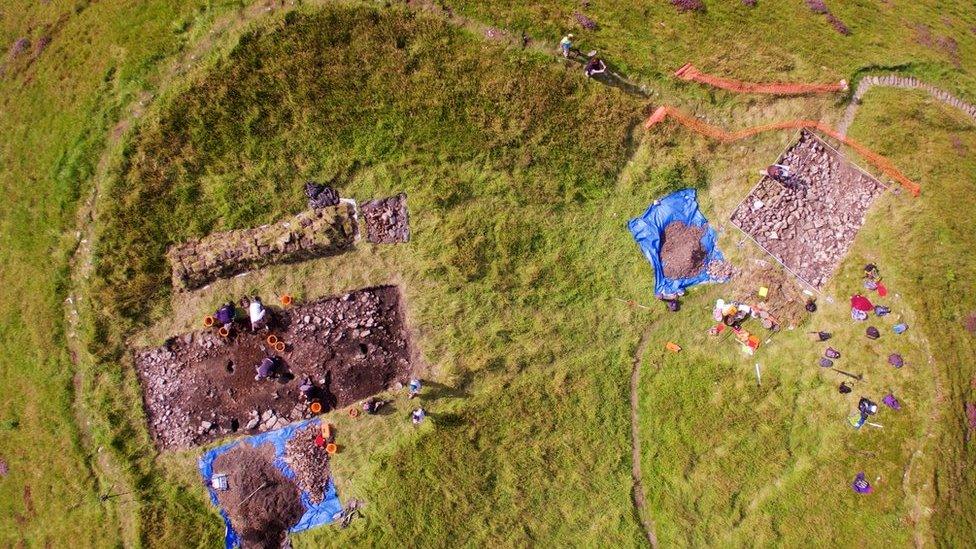
- Published3 August 2015
